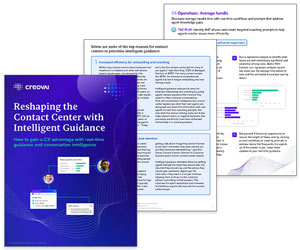With AI fast changing the world of customer service, striking the right balance between automation and personalization is crucial!
Lean too far into automation and customers feel like they’re talking to a robot. Overdo personalization and interactions may become overly familiar or even intrusive.
So, let’s explore why this balance matters, where it often goes wrong, and how to get it right…
What Do Automation and Personalization Bring to the Table?
First things first, when we talk about personalization, we’re talking about tailoring the customer’s experience to fit their needs. Recognizing their preferences, past interactions, and current situation.
For instance, imagine a customer calling in. If the agent already has their history at their fingertips, they can jump right to providing a relevant solution, making the customer feel genuinely understood.
Then there’s automation, which is all about using technology to handle those everyday tasks. Things like chatbots answering common questions or systems that automatically route customers to the right support team.
This frees up time for both the customer and your agents, allowing your human staff to focus on those more complex issues that really need their expertise.
When we combine these two approaches effectively, contact centres can create a much smoother, faster, and ultimately, a more satisfying experience for customers. Plus, it helps you streamline operations and reduce costs – a win–win.
How It Hurts CX When the Balance Isn’t Right
However, finding harmony between personalization and automation is essential – because here’s what can go wrong when the balance is off:
The “Creepy Factor” (AKA, Personalization Gone Wrong)
Ever had a chatbot address you by name too often, or reference past interactions in an unsettling way? When personalization crosses the line on being over-familiar, it can quickly feel intrusive rather than friendly.
Customers value the recognition but don’t want to feel surveilled.
Rigid, Impersonal Responses Can Be Frustrating for Customers
On the flip side, too much automation without any personalization can feel frustrating.
Imagine calling customer service with a unique issue only to be met with canned responses that don’t address your needs. Or being treated like a new customer using a service for the first time, instead of the loyal customer you are.
A lack of flexibility in automated interactions can make customers feel unheard and unvalued.
Inconsistent Tone of Voice Can Create a Disjointed Customer Journey
A major pitfall in balancing automation and personalization is inconsistency. If your automated systems sound overly formal while human agents are casual and friendly, it creates a disjointed customer journey.
Marketing, legal, and customer service teams should also work together to align tone and messaging across all channels, so make sure to involve other departments in the business to ensure consistency here too.
10 Ways to Strike the Right Balance
1. Use Smart AI to Detect Customer Intent
The goal is for automation to be a helpful assistant, not a roadblock.
Modern AI systems, powered by things like sentiment analysis, are capable of interpreting customer intent and directing interactions appropriately – even customer complaints.
They’re also smart enough to recognize when a human agent is better suited to handle a situation.
2. Define the Right Moments for Automation vs. Human Intervention
Not all customer interactions should be automated. For example, the Value-Irritant Methodology can help determine which intents are best suited for automation – as automation should be applied where it adds value and doesn’t cause frustration.
The key is identifying which interactions benefit from automation and which require human empathy and problem-solving.
By using this methodology, contact centres can ensure that automation enhances the customer experience without replacing the human touch where it’s needed most.
For top tips and advice on how to get started with simplifying and automating the contact centre, watch our webinar: Simplifying and Automating the Contact Centre
3. Give Automation a Personality – But Not Too Much
Automation doesn’t have to be robotic, but it shouldn’t try too hard to be human either. Creating a well-defined brand persona helps keep responses warm and engaging without veering into the uncanny valley.
The key is striking the right balance – automation should feel approachable and friendly, but not so chatty or over-familiar that it comes across as insincere. A clear brand voice ensures that interactions remain consistent, professional, and aligned with the company’s values.
With just the right amount of personality, contact centres can enhance the customer experience with their automated processes, making it feel more personal and connected without crossing into territory that feels unnatural or forced.
4. Keep the Language Simple and Natural (But Never Bland)
One of the most overlooked aspects of automation is language. As Priscilia Amadi ICSN advises:
“Using big words in your automation process doesn’t come off as personalization. Keep the language simple.”
Automated responses should match customer expectations – concise, clear, and easy to understand.
5. Blend Your AI With Your Humans
For the best customer experience, AI automation should work alongside your human agents.
That means making it effortless for customers to speak with a human agent when they want to escalate an issue or need more personalized help.
It’s also crucial to have smooth transitions, so customers can easily connect with a person whenever they need that extra support.
For examples of where AI is transforming the role of agents to deliver exceptional customer experiences, read our article: The Superhuman Touch – How to Blend Agents and AI for Maximum Impact
6. Map Your Customer Journey
It’s also important to understand your customer’s journey before automating or personalizing anything, because it lets you design automation that feels natural and helpful.
By mapping each step, you can see where automation can fit in without sacrificing that personal touch. This ensures your responses are timely and relevant, building trust and reducing frustration.
Plus, it helps you spot opportunities to personalize the experience, making it feel more tailored to each customer. Ultimately, it’s about creating a seamless experience that benefits both the customer and the business.
If you are looking for advice on creating customer journey maps, read our article: How to Improve Your Customer Journey Mapping
7. Use Contextual Clues
Think of it this way: good communication isn’t just what you say, but when and how you say it.
So, when it comes to where a customer is in their journey – take note! Are they fresh from a purchase? Did they just show a lot of interest in a particular product? Or maybe they recently asked a question?
By noticing these cues, you can tailor the approach, making it feel less like a generic message and more like a thoughtful, personalized interaction.
Ultimately, using these contextual cues will allow you to create a more relevant experience for each customer. When you speak to their specific needs and current situation, they’re much more likely to engage and stick with you.
8. Offer Customer Support Across a Variety of Channels
You also need to make sure your team is trained to provide quick and consistent responses, no matter where a customer reaches out.
Think about it: whether they’re on social media, email, or live chat, each interaction should genuinely reflect your brand’s values, personality, and commitment to professionalism.
Ideally, a customer should feel like they’re talking to the same, cohesive team, even if they’re switching between different communication channels.
Connecting your messaging and processes across all these touchpoints can create a unified experience. This builds trust and satisfaction, and allows customers to interact with your contact centre in the way that’s most convenient for them, without any friction or confusion.
9. But Make Sure They Can Always Speak to a Human If They Want To
Everyone has their own preference – some people love the convenience of self-service, while others really value connecting with a human.
So, it’s a great idea to offer a range of options, giving your customers the freedom to choose the channel that works best for them.
10. Improve Your Automation With Data and Customer Feedback
And finally, to really make automation work for your customers, think of it as a continuous feedback loop.
You can analyse customer feedback and analytics to see how people are interacting with your chatbots and self-service tools, pinpoint areas where responses might be falling short, then fine-tune them for better satisfaction.
Reviewing your data on a regular basis could allow you to spot patterns and identify any pain points in the customer journey.
For example, if you notice certain questions are consistently being escalated to human support, that’s a clear signal that the automated response isn’t quite hitting the mark and needs some adjustments to make it a smoother and more enjoyable customer experience.
Getting the Balance Right Benefits Everyone
Automation and personalization don’t have to be at odds!
When you thoughtfully design your contact centre processes, you can create an experience that’s both efficient and genuinely human. And that balance isn’t just good for in-the-moment customer experience, it’s essential for building lasting loyalty too!
For more information on personalization and automation in the contact centre, read these articles next:
- 21 Steps to a More Personalized Customer Experience
- Perfect Your Automated Customer Service Emails
- How Can You Automate Your Contact Centre?
Author: Stephanie Lennox
Reviewed by: Xander Freeman
Published On: 30th Sep 2025 - Last modified: 13th Nov 2025
Read more about - Customer Service Strategy, Artificial Intelligence (AI), Automation, Customer Experience (CX), Customer Service, Personalization, Service Strategy, Stephanie Lennox, Top Story











































